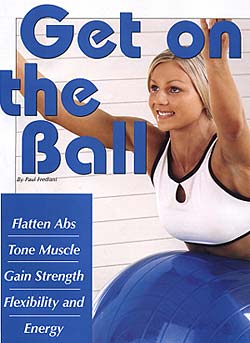FITNESS RX MAGAZINE, August 2003, page 80
Core strength and conditioning are the buzzwords in the fitness industry today. They certainly mean more than just lying on one's back and crunching away. What is core strength and why is it important? And why use a Swiss ball (also called a fitball, exercise ball, etc.)? Can it help us achieve the results we're looking for?by Paul Frediani
Getting Down to Basics
The core consists of the abdominals and the lower back. Like cables of a bridge, the core must be strong to maintain the integrity and stability of the trunk. It is the kinetic link that connects movements between the lower body and the upper body.
Your core is the center of power. Furthermore, it's where the center of gravity is located. It plays an essential role in having good balance and equilibrium. It is involved in respiration and in providing intra-abdominal pressure, thus protecting your spine and lower back. A strong and healthy core is optimal for good posture. This is essential in the reduction of overuse and wear and tear of your joints. A strong and stable core will make you feel, perform and look better. What good would it do to have strong legs, shoulders, arms and chest, if you strain your back when picking up groceries?
To properly train the core we need a basic understanding of the anatomy and the function of the abdominal and lower back musculature. The abdominal unit is made up of four muscles, the rectus abdominis, external oblique, internal oblique and the transverse. The rectus abdominis is the most superficial of the abdominal muscles. It originates at the pubic bone crest and is inserted in the ribs next to the solarplex. The primary function of the rectus is forward flexion and to stabilize the spine when it is in extension. The external oblique is the largest of the abdominal muscles. Its origin is the fifth to the twelfth ribs and its insertion is the linea alba that runs straight down the middle of the rectus. The external oblique rotates the trunk to the opposite side and is anchored by the opposing internal oblique when doing so.
The internal oblique lies inferior to the external oblique. It originates at the middle of the top of the hip bone (iliac crest) and is inserted in the tenth, eleventh and twelfth ribs. It's responsible for same-side flexion. Seated deeply beneath all these muscles is the transverse abdominis. It originates in the lower back and is inserted in the center of the rectus. The transverse is the major stabilizer of the lumbar spine; it acts like the body's natural weight belt. Many researchers believe it is where all movements begin.
The back muscles known as the erector spinae muscle group (spinalis, longisimus, and illocostalis) counterbalance the forward flexion of the abdominal musculature. These muscles run up the vertebral column and are responsible for extension and side flexion of the spine. No core strength program is complete without training them. One-third of your total core exercises should consist of back extensions. By ignoring the strengthening of your erectors while strengthening your abdominals, you would encourage and promote poor posture.
Why the Swissball?Using the Swissball is ideal for training the abdominals. Its unstable and round surface allows for a greater degree of extension before going into flexion. This added movement trains the muscles in the full range of motion for which they were created. A fuller range of motion will recruit more muscle fiber. The more muscles recruited, the fuller the development of the muscle. Imagine what your biceps would look like if you only lifted the bar halfway up.
The unstable nature of the ball requires you to stay alert and maintain a sense of equilibrium. This certainly removes any boredom from your exercising. While performing back extensions on the Swissball, you will encourage a myriad of smaller, deeper synergistic muscles (multifidus) along the spine to activate and increase stabilization among the vertebrae. This is an extremely important and often neglected portion of strengthening the core.
Flexibility is an important segment of any workout routine and the core is no exception. A thorough stretch of the abs and back after a workout will ensure that no segmental muscles become over-tight. Tight abdominals can pull down on the front of the ribs and create a forward shoulder posture that can even effect your breathing.
For the Rectus Abdominis
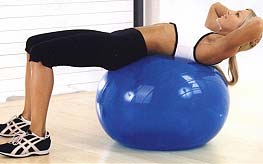 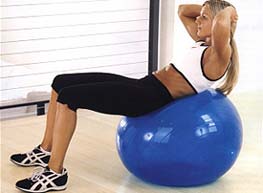 |
Swissball Crunch |
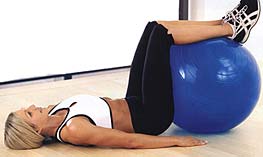 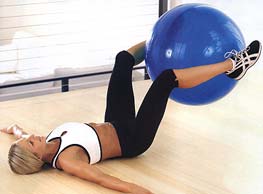 |
Reverse Crunch |
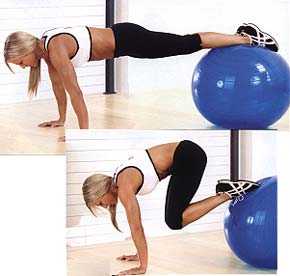 |
Knee Crunch |
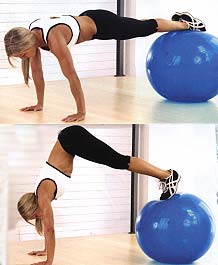 |
Pike |
For the External Obliques
Crunch with Knee Side Curl |
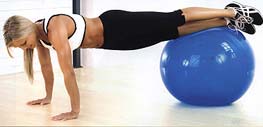 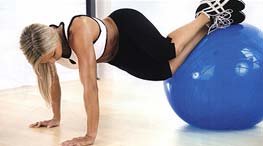 |
Crunch with Rotation |
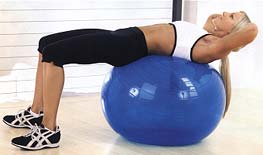 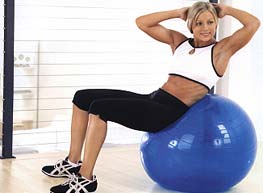 |
Scissor Rotations |
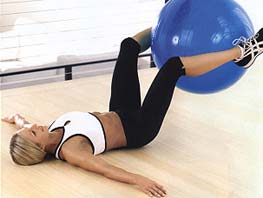 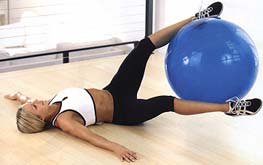 |
For the Internal Obliques
Side Crunch (not shown) |
For the Transverse
Belly Tuck (not shown) |
For the Lower Back
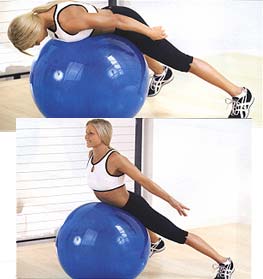 |
Back Extension #1 |
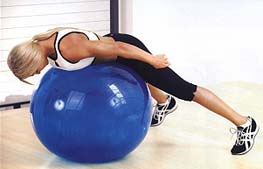 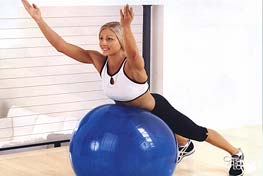 |
Back Extension #2 |
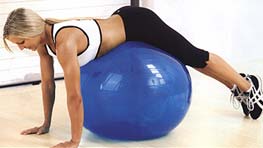 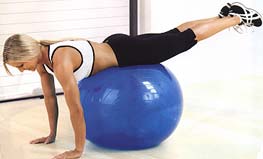 |
Reverse Back Extension |
Ab and Back Stretch
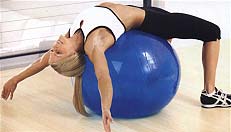 |
Ab Stretch |
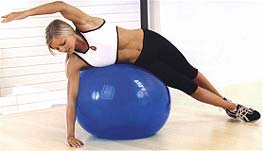 |
Waist Stretch |
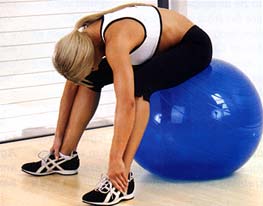 |
Back Stretch |
Paul Frediani is an Elite+ personal trainer at Equinox in New York City. He's certified by ACE, ACSM and is a medical exercise specialist. He sits on the board of the US Surfing Federation's sports medicine committee and is the author of several books.
Photos by Per Bernal - Fitness Model: Heather Schirra

